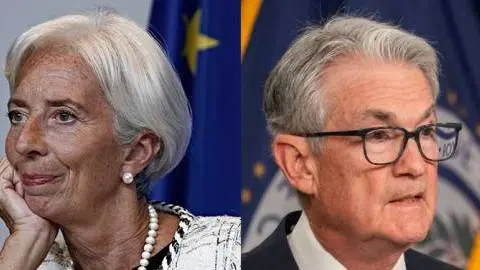An ECB rate cut next week looks like a no-brainer
In what's been a very calm run-up to next week’s meeting, we've been getting pretty clear signals from European Central Bank officials in Davos that rate cuts will continue
Contrary to the run-up to the ECB’s December meeting, the preparation for next week’s has been relatively quiet, at least in public. There haven’t been any controversial views about the next steps. Instead, there seems to be a growing consensus about the need for further rate cuts. Today’s comments by ECB president Christine Lagarde suggest that a 25bp rate cut at next week’s meeting is a no-brainer and that the rate cut cycle will continue.
Rate cut next week despite higher inflation
Remember that the minutes of the ECB’s December meeting already showed a growing easing bias at the European Central Bank based on doubts about the growth forecasts and the growing risk of inflation undershooting. With little new hard data since the December meeting, the ECB is currently looking at a mild version of stagflationary tendencies: continued sluggishness of the economy and accelerating inflation. Still, the ECB seems to be looking through this temporary acceleration of inflation, and even the hawks sound dovish.
The main reason for the ECB’s increased dovishness is that the December forecasts used a terminal rate of below 2%. Just to deliver the December forecasts' outcomes, the Bank will have to cut rates by a total of 100bp. Add to that the increased risks for eurozone growth stemming from the potential economic policy choices of the new US administration, and you can understand where officials are coming from.
Rate cutting will continue beyond next week's meeting
At 3%, the deposit interest rate is still restrictive and too restrictive for the eurozone economy's current weak state. The recent surge in bond yields has also worsened financial conditions in the eurozone. Even if some argue that monetary policy can do very little to solve structural issues, political instability and uncertainty in many countries will force the ECB to continue doing the heavy lifting.
Also, as long as the current inflationary pressure is anticipated to diminish over the year, the Bank is likely to overlook the present inflation resurgence. While the experience of being slow to address rising inflation will deter the ECB from adopting ultra-low rates, the desire to stay ahead of the curve remains a compelling reason to return interest rates to neutral as swiftly as possible.
This means that the ECB will continue to cut rates. Bringing them at least to the upper end of estimates for the neutral interest rate, i.e. 2.5%, seems like a no-brainer. However, if the eurozone economy remains weaker than the ECB’s December forecasts predict, cutting rates further will become unavoidable.
This publication has been prepared by ING solely for information purposes irrespective of a particular user's means, financial situation or investment objectives. The information does not constitute investment recommendation, and nor is it investment, legal or tax advice or an offer or solicitation to purchase or sell any financial instrument. Read more
Download
Download article
22 January 2025
Our analysts’ views on this week’s central bank meetings This bundle contains 6 Articles